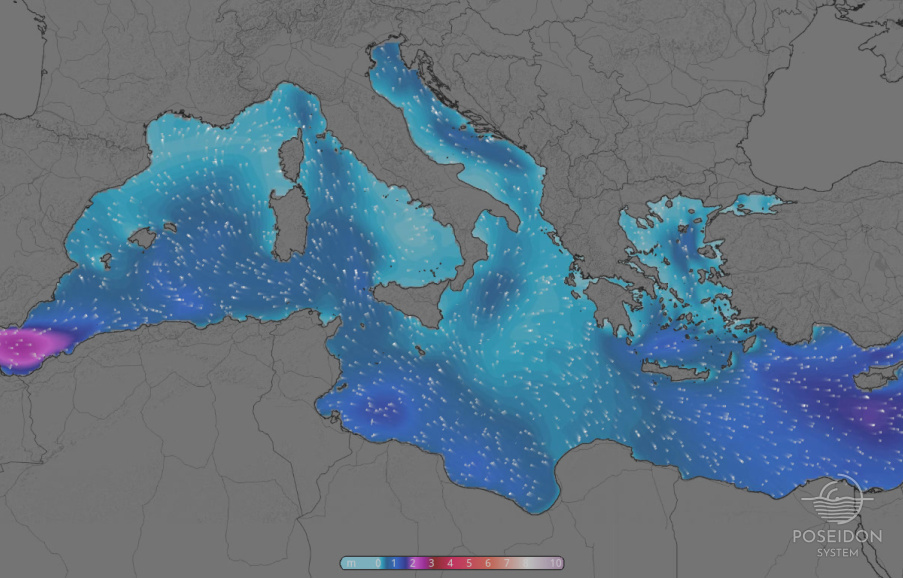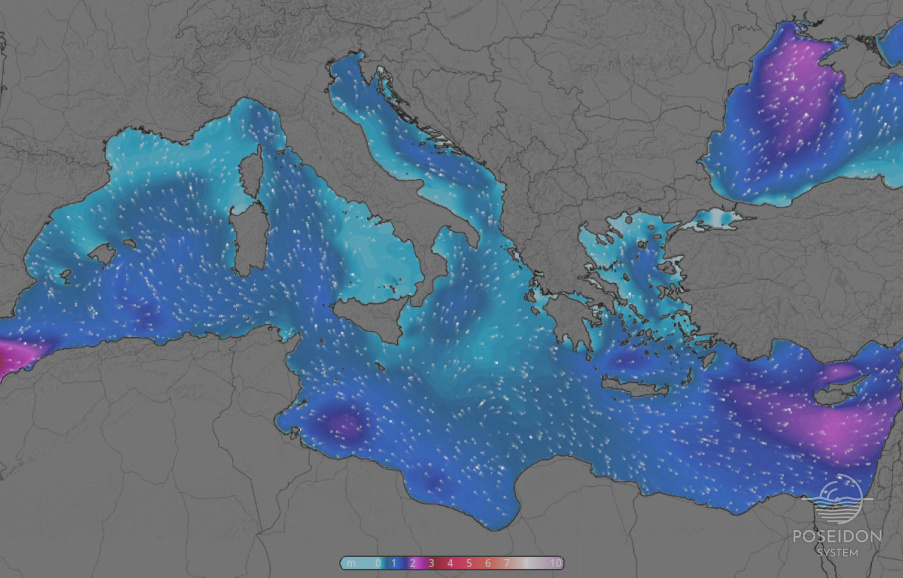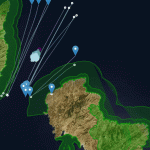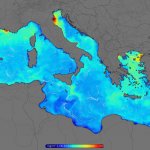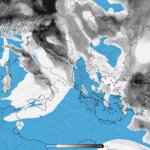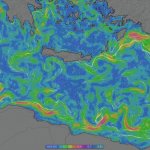Waves
POSEIDON's wave forecasting system
Development and Implementation: HCMR
Chief Scientist: Dr. Gerasimos Korres
A. WAM model
The wave forecasting system was set-up as a nested configuration with a coarse grid covering the entire Mediterranean Sea at a spatial resolution of 0.1o×0.1o and a fine grid nested within the coarse grid. The domain of the fine grid covers the Aegean Sea between 30.4oN and 41oN, and between 19.5oE and 30oE at a spatial resolution of 1/30o ×1/30o resolving the wave spectrum at each grid point in 24 directional and 30 frequency (0.05Hz->0.79316Hz) bins. The wave models are based on the WAM Cycle-4 code. The WAM model was the first model (followed by SWAN and WAVEWATCH-III models) to solve the complete action density equation, including non-linear wave-wave interactions. WAM (Cycle 4) is a third generation wave model, which computes spectra of random short-crested wind-generated waves. The WAM code can be used for shallow and deep-water calculations and can account for depth and current refraction. The following basic wave physics are accounted for in the WAM code:
- Wave propagation in time and space
- Wave generation by the wind
- Shoaling and refraction due to depth
- Shoaling and refraction due to current
- White-capping and bottom friction
- Quadruplet wave-wave interactions
The wave forecasting system issues wave forecasts for the next 5 days forced with hourly analysis and forecast winds produced by the POSEIDON weather prediction system.
B. WAVEWATCH model
The WAVEWATCH based Mediterranean wave forecasting system is a stand-alone model implementation covering the entire Mediterranean and the Black Sea at a spatial resolution of 1/20o×1/20o. The wave spectrum is resolved at each grid point in 24 directional and 30 frequency (0.05Hz->0.79316Hz) bins. The wave model is based on the WAVEWATCH-III code – Version V2.22 (Tolman 2002). WAVEWATCH III includes refraction and straining of the wave field due to temporal and spatial variations of the mean water depth and optionally of the mean current. The source terms include wave growth and decay due to the actions of wind, nonlinear resonant interactions, dissipation and bottom friction.
The wave forecasting system issues wave forecasts for the next 5 days forced with hourly analysis and forecast winds produced by the POSEIDON weather prediction system.
References
Tolman, 2002: User manual and system documentation of WAVEWATCH-III version 2.22. NOAA / NWS / NCEP / MMAB Technical Note 222, 133 pp.



